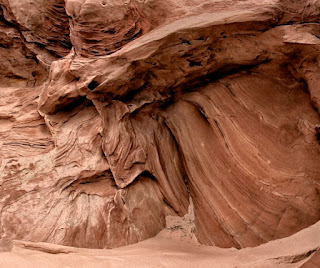Folded Rocks and the Genesis Flood
When discussing geological features, secular scientists tend to get bent out of shape when the Genesis Flood is mentioned — especially since the Flood is the best explanation for bent and folded rocks. Biblical history, including the Flood, was accepted by most people for many years.
James Hutton petulantly stamped his foot and declared that geology must be explained by naturalistic gradual means, so leave God and miraculous processes out of it. He spread his ideas in the 1780s, and people began to accept the philosophical view of deep time. Uniformitarianism is the dominant position today.
 |
| Folding rock, Flickr / John Fowler (CC BY 2.0) |
Have you ever walked along the beach and looked up to admire folded strata (rock layers) in cliffs? There are plenty of examples of folding in rocks along the south coast of England. Most examples involve multiple layers of rock, bent together. How did they get like that, and what were the forces needed to bend the rocks in such dramatic ways?
More importantly, how long did these processes take? The information about geology on the Internet and TV constantly reinforces the idea of a vast age of the earth.
. . .
Rocks are a lot like people—they can get stressed! And like people, rocks react to stress in different ways. Stress is the force acting on the rock, which can be applied in different directions. There is ‘tensional stress’, which pulls rock apart. ‘Compressional stress’ causes rock to be squeezed together. ‘Shear stress’ comes from two forces in opposite directions but offset from each other. . .
To read it all, see "Fantastic folds — Curvy rock layers undermine millions of years." Also, a very technical article by Dr. Andrew Snelling was referenced in the one linked above. To read it, see "The Petrology of the Bright Angel Formation, Tonto Group, Grand Canyon, Arizona." Below is some Christian hard rock music.